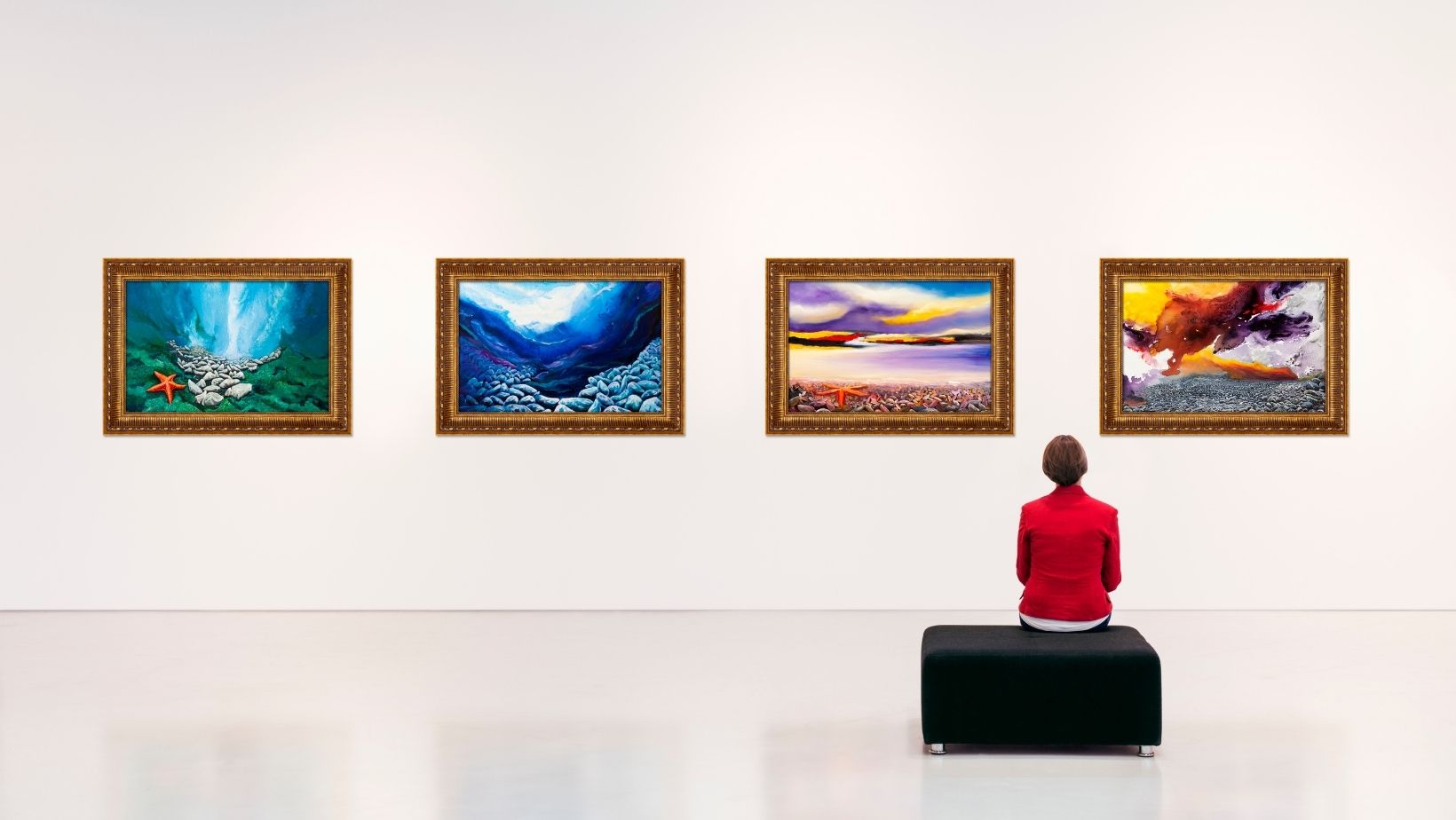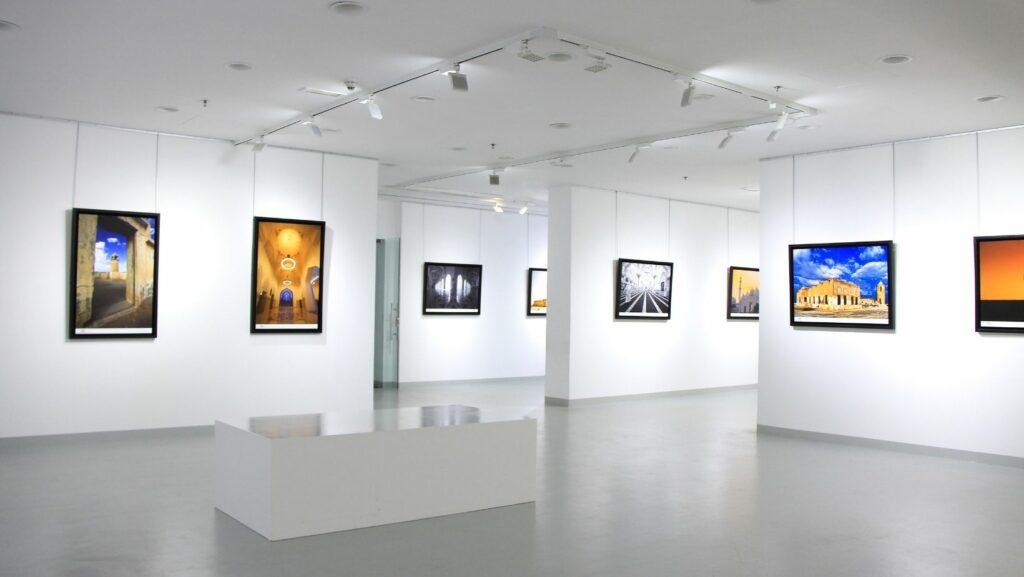Once a site of quiet contemplation and aesthetic purity, the modernist art gallery has found an unlikely heir: the trade show booth. Though seemingly worlds apart, both are bound by a visual language shaped by architecture, light, space—and intent. What was once created to elevate art and isolate it from commerce has now been repurposed to drive sales, manipulate perception, and turn consumer goods into spectacle. This is the strange inheritance of modernist exhibition design.
Table of Contents
ToggleThe Modernist Gallery: A Space of Ideals
At the heart of the modernist gallery is a paradox. It is a space that strives to disappear. Think of the “white cube” format—walls scrubbed clean of historical reference, neutral lighting, bare floors, and a haunting quiet. Developed in the early 20th century and formalised by institutions like New York’s Museum of Modern Art, this gallery model sought to provide a sanctuary from the noise of everyday life. The goal was clarity: to elevate the object and separate it from the clutter of context.
Visionaries like Alfred H. Barr Jr., Herbert Bayer, and El Lissitzky viewed exhibition design not just as a backdrop but as a framework for thought. The viewer was to engage in a kind of ritual encounter with the work—one that was linear, logical, and above all, reverent. The modernist gallery was a cathedral of cultural capital.
This space was, at least in theory, non-commercial. The art was not a product to be consumed in the ordinary sense. It was meant to be experienced, contemplated, and perhaps even transcended.
The Trade Show as Cultural Performance
By contrast, the trade show is unapologetically commercial. From the Crystal Palace of 1851 to today’s sprawling expos in Las Vegas or Dubai, trade shows have always showcased innovation, competition, and commerce. They are built for crowds, designed to impress, and funded by brands with something to sell.
And yet, look closer at the layout of a typical exhibition stand: the modular walls, the sleek minimalism, the controlled lighting, the almost religious focus on the product. It’s not so different from a gallery space. Trade shows, once chaotic bazaars of signage and clutter, have begun to mimic the gallery’s aesthetic. The goal? Not to contemplate, but to seduce.
Products are no longer simply displayed—they are staged. Presented like artefacts. Elevated to the status of cultural objects. The result is a transformation of retail into theatre. Brands harness the power of spatial design to tell stories, create illusions of exclusivity, and provoke desire.
Borrowing from the White Cube

This aesthetic migration is no accident. Modernist ideals offered a useful blueprint for attention engineering. Clean lines and uncluttered space draw the eye. Neutral backgrounds allow bold colours or minimalist packaging to stand out. Strategic lighting creates atmosphere and emotion.
Luxury brands have embraced this approach with particular zeal. Apple’s trade booths, for instance, are textbook examples of white cube influence: sparse, geometrically precise, and drenched in a purity that suggests technological sanctity. The product is the hero, framed as both object and icon.
Even the modularity of trade show displays echoes the design logic of Bauhaus and Constructivist architecture: form following function, flexibility over ornamentation, and a celebration of industrial materials. The spatial codes of modernism are no longer confined to museums—they are available by the square metre at any exhibition centre.
The Rise of the Custom Stand: Branding Through Spatial Storytelling
This aesthetic convergence has led to the proliferation of custom exhibition stands, which take the gallery-inspired trade show format and push it further into the realm of brand narrative. Unlike modular, off-the-shelf booths, custom stands are meticulously designed to express brand identity through space, structure, and experience. These bespoke environments borrow not only from the spatial purity of the modernist gallery but also from its ability to shape the viewer’s emotional response. In doing so, they transform the booth from a container into a statement—a kind of commercial installation art.
Custom exhibition stands also signal a deeper shift in how brands approach their physical presence. No longer satisfied with simply displaying a product, companies are using architectural design to immerse attendees in carefully curated experiences. These spaces may evoke minimalism or maximalism, high art or pop culture, but always with a strategic goal: to stand out in a saturated visual environment. Just as the modernist gallery once stripped away distractions to highlight form, today’s custom stands use controlled space to amplify brand values, create memorable encounters, and generate emotional engagement. It is exhibition design not as backdrop—but as front-line communication.
Embodying vs. Rejecting Modernist Ideals
However, what trade shows adopt in form, they often abandon in spirit. Where the modernist gallery pursued detachment and reflection, the trade show demands interaction and urgency. Attention is no longer contemplative—it’s transactional.
In this light, the trade show both embodies and rejects modernist ideals. It embraces the visual language—the minimalism, the object centrality, the architectural clarity—but it subverts the purpose. Instead of slowing the viewer down, it speeds them up. Instead of isolating the object from economic forces, it plunges it into a hyper-commercialised arena.
Consider the audience, too. The gallery presumes a solitary viewer: quiet, intellectual, slow-moving. The trade show assumes a crowd. Restless. Overstimulated. Optimised for conversion.
What’s Lost in Translation?
When the spatial codes of modernism are transplanted into capitalist soil, they bloom into something unrecognisable. The gallery’s white walls were meant to dissolve the world, creating a contemplative void. The trade show’s white walls isolate a brand, not to provoke thought but to spotlight a sale.
This shift marks more than a visual borrowing. It represents a deeper transformation: the commodification of space itself. Design principles that once aimed at purity of perception now serve as tools of persuasion. Visual clarity becomes marketing psychology. Minimalism becomes branding strategy.
And perhaps most critically, the viewer becomes a consumer—not an interpreter.
Reframing the White Cube: A Modernist Inversion
What we are witnessing is not merely an aesthetic evolution, but a conceptual inversion—one that echoes the broader themes explored throughout Fall of Modernism. Modernism once held space as sacred; its architectural vocabulary aspired to truth, function, and clarity. Today, those very ideals have been appropriated to serve spectacle and brand mythology. The shift from gallery to trade show is not just a change in use—it’s a transformation of meaning. Purity becomes persuasion, detachment becomes immersion, and the observer becomes the buyer. It’s a legacy of modernism never intended, yet impossible to untangle.
This trend aligns with the critical conversation captured in “Why Modernism Is Losing Its Relevance Today”, which argues that modernist aesthetics are increasingly repurposed as style without substance. In trade show culture, the clean forms and minimal palettes of modernism often signal prestige—but rarely provoke reflection. Like clinical frameworks divorced from context, they become commodified surfaces rather than critical spaces.
The Spectacle of Everything
The gallery and the trade show have become strange cousins—one striving for timelessness, the other chasing attention in the now. But both manipulate space to shape meaning. The difference lies in what that meaning serves: art or commerce? Stillness or speed? Reflection or impulse?
In a world where every surface is for sale, even the sacred geometry of modernist design is no longer immune. The gallery gave us the white cube. The trade show turned it into a billboard.
And so, in the spectacle of modern commerce, what began as an aesthetic of detachment now plays centre stage in the theatre of persuasion.
